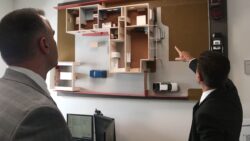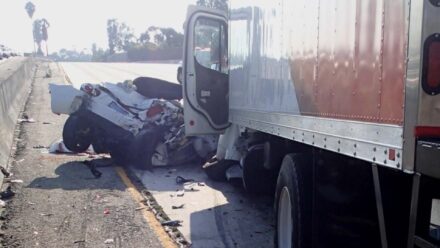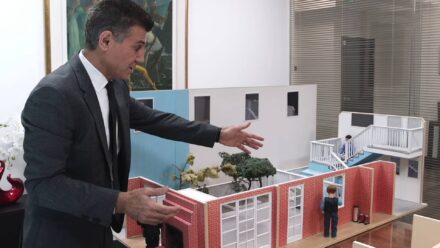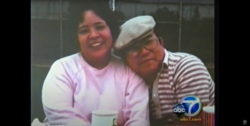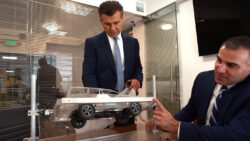“Toyota decided to make safety an option instead of a standard on their vehicles. They decided to save a few bucks, and by doing so, it cost lives.”
Garo and Armen joined Steve Lowry and Yvonne Godfrey on The Great Trials Podcast to discuss this bellwether case for nearly 300 unintended acceleration cases involving Toyota vehicles.
On August 28th, 2009, Noriko Uno was travelling along Euclid Avenue when another driver ran a stop sign and hit her car. She was spun 180 degrees before the car took off into oncoming traffic, rapidly accelerating up to speeds of 100 mph. After swerving to avoid other drivers, Noriko lost control of the vehicle, clipped a pole, jumped a median, and finally crashed into a tree which tragically killed her.
That was when Garo and Armen stepped in, recovering a multi-million dollar award for Noriko’s family.
Total Payout:
$11,900,000.00
The Incident
“Imagine her strapped into her Toyota Camry driving 100 mph, knowing the next move would be fatal“
Noriko was on the way to buy groceries, travelling southbound on Euclid Avenue in the City of Upland, when she was struck by the car that had failed to yield to the stop sign.
Although the impact was referred to by the other driver’s defense as “a minor collision, similar to a bumper car”, this was enough force to send Noriko’s car “spinning and uncontrollably accelerating, crossing the center median curb and striking multiple telephone poles and trees.“
Picture being in her position.
You’ve just been struck by another driver. Your car has been spun a full 180 degrees, and now your accelerator pedal is stuck. Your car takes off, rapidly accelerating, and nothing you can do will slow it down.
This was how Noriko lived her final moments — speeding south against oncoming traffic, powerless to do anything but try to steer for her life.
As described In the complaint for damages filed with the Los Angeles Superior Court:
“In an effort to control the sudden unexpected acceleration of the Camry, Noriko attempted various actions, which included stepping on the brake pedal.
None of her efforts were in any manner successful in slowing or controlling the Camry, which continued to accelerate southbound on Euclid Avenue at a high rate of speed.
Due to the inabilty of Noriko to slow or stop the Camry or control its movements, Noriko entered opposing traffic and now traveling southbound on the northbound lanes of Euclid Avenue.
Multiple witnesses, identified within the Traffic Collision Report, observed Noriko with her hands on the steering wheel of the car, attempting to control the car in an attempt to dodge oncoming traffic.
Noriko swerved to her right to avoid a collision with an oncoming truck and entered the central median separating the northbound and southbound lanes of Euclid Avenue.
Upon entering the median and while still at a high rate of speed, the Camry struck a telephone poll, destroyed a tree, became airborne and came to rest by impacting a large tree.”
Noriko died instantly upon impact with the tree, her foot broken and mangled under the brake pedal and her emergency brake activated.
“She didn’t like going on the freeway because it was too fast. Any long distances, she would make myself or my dad drive”
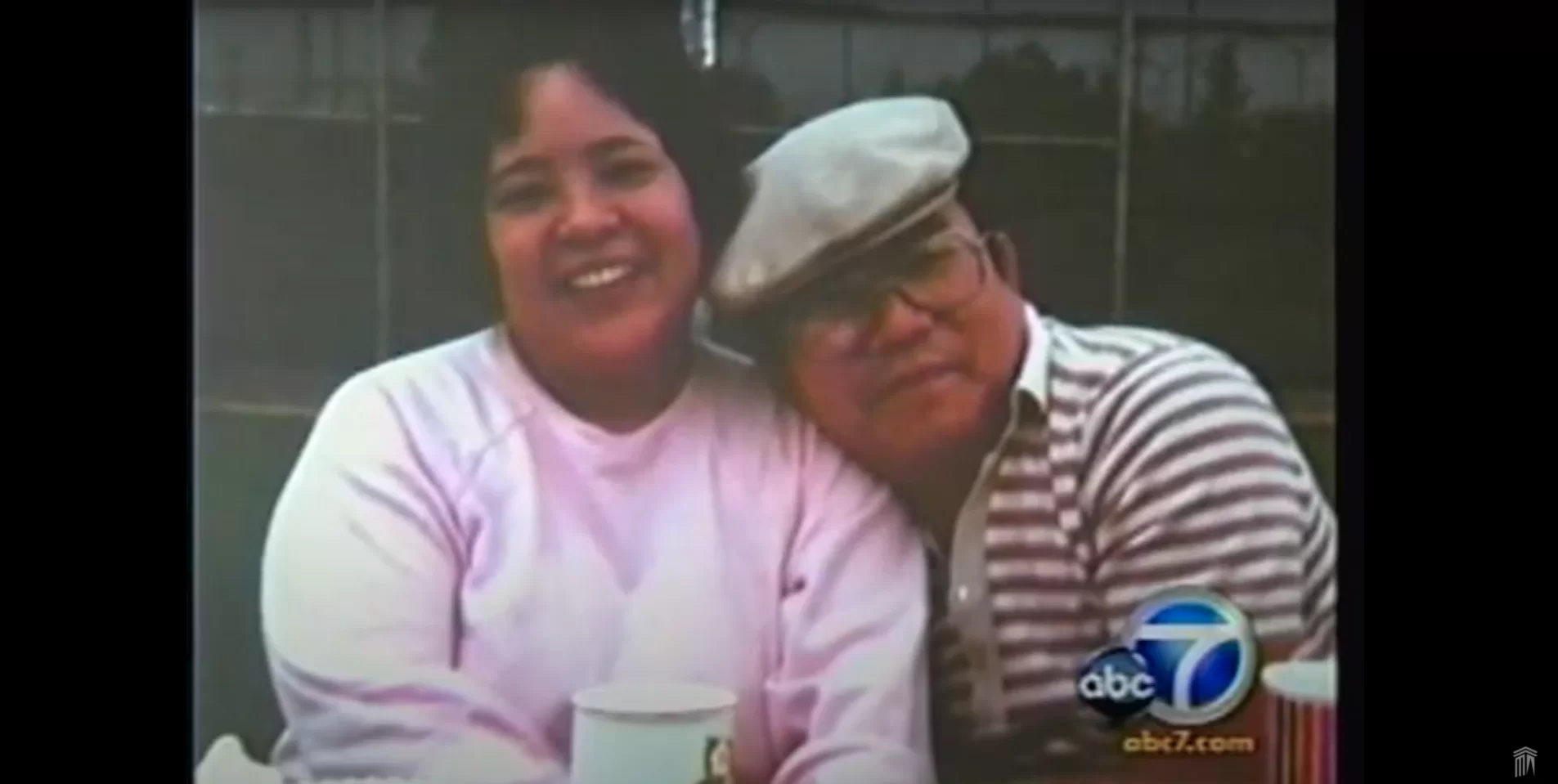
Her husband, Peter, told an old shogun tale that one arrow is strong, but two arrows are much stronger than one. Three are even stronger. You can never break three arrows. Without Noriko, Peter is down to two arrows. Life is still worth living, but without Noriko it’s next to impossible
Noriko was full of life; people called her Little Miss Sunshine with her laughter, with her good mornings.
She would greet kids when they came by the house with envelopes full of gifts or money. She had a little garden where she grew fruit to make preserves for friends and neighbors.
There was never a picture where she wasn’t smiling. She made the world around her a brighter place.
This tragic accident extinguished that light.
Leading the Charge
This was a bellwether trial, the first of a large number of lawsuits brought against Toyota to take them to task for the defects in their vehicles.
“The Uno trial, starting with jury selection Monday, is expected to last two months. The proceeding represents the first of the bellwether cases in state courts, which are chosen by a judge to help predict the potential outcome of other lawsuits making similar claims.
Other cases expected to go to trial in state courts this year include one in Oklahoma and another in Michigan. There are more than 80 similar cases filed in state courts.”
— CBS News, 2013
Our case against Toyota started just under a year after they settled for $1.6 billion in an economic loss class action lawsuit.
Prior to this, the National Highway Traffic Safety Administration had received over 6,200 complaints involving unintended, sudden acceleration in Toyota vehicles. Furthermore:
“Toyota Motor Corp. has recalled more than 8 million vehicles worldwide since last fall because of problems with gas pedals, floor mats and brakes. The Japanese automaker paid a record $16.4 million fine for its slow response to an accelerator pedal recall and is facing hundreds of state and federal lawsuits.”
— CBS News, 2010
The Toyota model Noriko was driving did not have a brake override system in place, despite the fact that such technology had already been adopted by many other auto manufacturers:
“Lawyers for other plaintiffs are set to argue that Toyotas contain electronic defects that can cause sudden acceleration. But Mardirossian, Uno’s attorney, claimed that the car’s lack of a brake override system was responsible for his client’s death.
That fail-safe, designed to prevent a car from accelerating if the brake is depressed, was adopted by many auto manufacturers in the early 2000s, but Toyota didn’t start using it until 2010.”
— LA Times
There would have been no downside to implementing a brake override system. If one had been in place, this could very well have prevented the uncontrolled acceleration that caused Noriko’s death. Toyota should have included the model Generation Six Camry in the product recall.
If they had, Noriko would no doubt still be alive today.
Toyota Knew
“Until Toyota accepts and corrects the problem, these vehicles are ticking timebombs.”
Toyota was well aware of the issues with the Camry Noriko was driving when her fatal accident occurred.
They knew of a defect in the electronic throttle system of vehicles in 2002 – 2006 range that led to a “propensity to engage in sudden unexpected acceleration placing consumers and other members of the public at grave risk of injury or death.”
Yet they chose not to recall the vehicles.
What’s more, this was not the first time the defect had caused an accident. In the complaint for damages filed with the Los Angeles Superior Court, a multitude of other incidents were listed, spanning 9 pages. Here is just a small selection of them (emphasis added):
-
November 9, 2002: “I was driving on a highway when my band new Camry went out of control and sped up, sending the car through guardrail. My car ended up on the other other side of the highway going the opposite direction…taken by ambulance to a trauma center where I was hospitalized.”
-
September 4, 2003: “The Camry experienced an un-commanded acceleration causing Mrs. Cafua to loose control resulting in the accident and her death.“
-
March 14, 2004: “The car accelerated uncontrollably to a speed of 80 to 92 miles per hour in less than 250 feet when the car hit a mobile home. They hit so hard it moved the double wide almost a foot. Killing mother passenger and injury to her friend the driver.”
-
September 25, 2005: “Brakes were unable to bring the car to a stop, instead the car accelerated. Car finally came to a stop after crashing into a house.”
-
January 24, 2006: “The manufacturer claimed all systems were functioning properly when the consumer’s vehicle suddenly accelerated and ended up inside a travel agency.“
-
January 27, 2007: “The car lunged forward as if I had stomped on the accelerator. I took my foot off the gas. It continues to accelerate as quickly as possible. I used the brakes with no results. I was terrified as I zoomed out of the car wash and into an area where there is heavy pedestrian as well as vehicular traffic. I could tell that I was going as fast as the car would go…I crossed the sidewalk, Pine Street and the parking lot of a convenience store. I hit a telephone pole, an iron poll and a large poll on a sign for gas. Both my legs were broken.“
“They knew this years ago. If they had recalled them then, my wife wouldn’t have died. My wife shouldn’t have died.”
In summarizing Toyota’s knowledge of and failure to rectify the vehicle defects, the complaint filed with the LA superior court reads:
“By manufacturing, designing, failing to warn, selling, failing to recall, failing to retrofit, and profiting from the sale of Generation Six Toyota Camrys … with actual knowledge that such vehicles are afflicted with a defect that causes sudden unexpected acceleration …Toyota engaged in despicable conduct done with a willful and knowing disregard of the rights and safety of others”
Assigning Blame
“People want to know that their loved one wasn’t responsible for their own death. They want to know it wasn’t their fault.”
Toyota’s lawyers argued that even had the safety measures been implemented, they would not have saved Noriko’s life as they claimed she had mistaken the brake pedal for the accelerator.
They suggested that there was no defect in the vehicle’s braking system. That had Noriko simply pressed the brake pedal, her car would have come to a stop. Their reasoning for this was that the 2006 Camry had three times the stopping power that it did go power.
They concluded that Noriko just didn’t brake at all.
Why wouldn’t Noriko brake in a situation so clearly and obviously dangerous as this one?
Opposing counsel invoked Noriko’s medical conditions as an explanation. They suggested that it was driver error, not vehicle error, that caused the fatal collision:
“Ladies and gentlemen, this is a case of driver error. This is a driver problem, not a car problem. Mrs. Uno’s overall behavior over the course of this accident sequence tells us there was something wrong with her.
There was nothing wrong with the vehicle. She stopped but didn’t stay at 23rd street. She took off and drove away the wrong way down a one-way street.
She kept driving straight ahead and progressively went faster and faster.
This all speaks to the fact that there’s a driver problem.
She was obviously confused. She was obviously disorientated. And we know, ladies and gentleman, that she had medical problems that explain disorientation. We know that. She had diabetes. She had hypoglycemia due to the medication she newly on and adjusting to. We knew she had encephalopathy.”
They presented Noriko’s low blood sugar level and reported confusion and frustration as evidence of cognitive impairment, cognitive impairment that they suggested would have led to pedal misapplication.
This pedal misapplication, they claimed, would explain why the vehicle took off the way it did: because Noriko pressed the gas instead of the brake.
The jury rejected this argument and found that Noriko did not cause her death.

The Outcome
While we did everything in our power to put forward the strongest possible case against Toyota, ultimately the decision lay with the jury.
In this case, that jury decided that 100% of the blame lay with the person who was driving the car that initially hit Noriko, setting the fatal chain of events into motion.
Although it is unfortunate that Toyota was able to secure a defense verdict, we were still able to hold the driver who hit Noriko accountable for her negligence.
This case also successfully demonstrated that the pedal misapplication defense does not work on a long distance high speed event.
Commenting on this verdict, product liability expert and professor of law at University of Richmond Carl Tobias stated the ruling “has to be a real concern for Toyota. They have maintained all along there wasn’t a problem.”
A year later, Toyota was fined $1.2 billion for concealing safety defects — at the time, the largest ever criminal penalty for a carmaker in the United States.
Above all else, we were able to deliver justice to a grieving family, successfully vindicating Noriko in proving that she was not responsible for her own death.
Our Lawyers Are Dedicated To Helping Grieving Families
Contact Mardirossian Akaragian LLP Today
Our firm offers exceptional talent, abundant resources, tireless dedication, and years of experience to give you the best chance of success in obtaining maximum compensation. Led by our award-winning attorneys, Garo Mardirossian and Armen Akaragian, we are prepared to provide you with aggressive representation and personalized legal guidance you need.
Talk to a Los Angeles auto defect lawyer about your case or contact our firm to schedule a no-cost consultation.
Schedule Your Auto Defect Case Evaluation
ARTICLE BY
ARMEN AKARAGIAN
Admitted to practice in 2006, Armen has arbitrated, tried, and settled several cases which have resulted in multi-million dollar verdicts and settlements.
Sources cited in this article:
-
“Episode 096: Armen Akaragian and Garo Mardirossian | Uno v. Toyota | $10 million verdict” – Great Trials Podcast
-
““Bellwether” Toyota sudden acceleration trial starting” – CBS News
-
“Euclid Avenue, Upland, San Bernardino County, CA” – Library of Congress
-
“Upland, California” – Wikipedia
-
“Initial crash led to decedent’s subsequent fatal collision: suit” – ALM
-
“Uno vs. Toyota complaint” – LA Times
-
“The Tale of the Three Arrows” – Ilinca Drondoe | Medium
-
“Bellwether trial” – Wikipedia
-
“A Case Study of Toyota Unintended Acceleration and Software Safety” – Prof. Phil Koopman | Carnegie Mellon University
-
“Toyota “Unintended Acceleration” Has Killed 89” – CBS News
-
“Jury awards $10 million in Toyota death case but absolves automaker” – LA Times
-
“What is a ‘Brake Override’ System?” – FindLaw
-
“Toyota Recall News Coverage – NBC 4” – YouTube
-
“Toyota Recall News Coverage – KTLA 5 Prime News” – YouTube
-
“Toyota Unintended Acceleration Cases (Uno Trial), Superior Court Case No. JCCP 4621: Closing Arguments” – Coalition of Court Reporters
-
“Toyota Motor Cases, Superior Court Case No. JCCP 4621 – Opposing Counsel Closing Statement” – Coalition of Court Reporters
-
“Acute Hypoglycemia Impairs Executive Cognitive Function in Adults With and Without Type 1 Diabetes” – Diabetes Care
-
“Jury hits Toyota with $3-million verdict in sudden acceleration death case” – LA Times
-
“Toyota Is Fined $1.2 Billion for Concealing Safety Defects” – NY Times





